🎧 MoralGain Music Blog | Kalimba, Steel Tongue Drum, Handpan: Your Sound of Peace and Harmony 🎧
BLOG
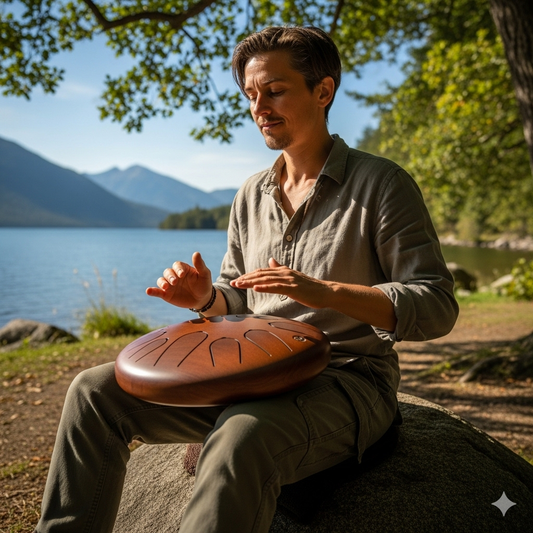
Beginner's Must-Read: How to Choose Your First ...
Summary and Tips Choosing your first tongue drum isn't as complicated as it seems. Just remember this simple formula: Beginner Tongue Drum = 8-10 inches + C Major Most...
Beginner's Must-Read: How to Choose Your First ...
Summary and Tips Choosing your first tongue drum isn't as complicated as it seems. Just remember this simple formula: Beginner Tongue Drum = 8-10 inches + C Major Most...
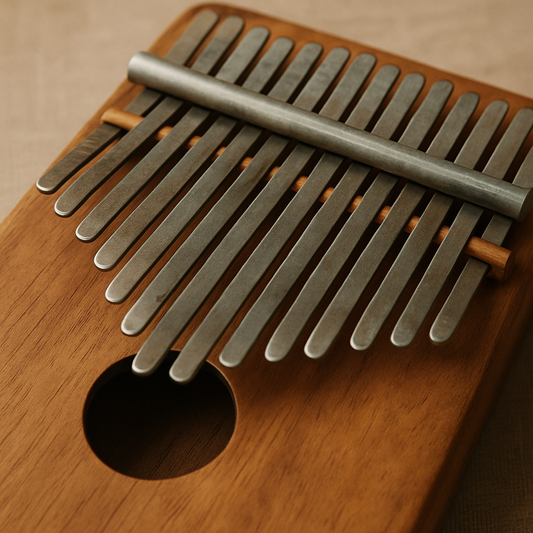
Exploring the Melodic World of Kalimba
The kalimba, often called the thumb piano, is a captivating instrument. Its soothing melodies have enchanted listeners for centuries. Originating from Africa, the kalimba is a symbol of musical heritage and innovation. This small, portable instrument is easy to learn. It offers a unique sound that resonates with both beginners and seasoned musicians. Its simplicity and charm make it a favorite among music enthusiasts worldwide. Kalimba music is known for its calming and melodic qualities. It is often used in meditation and relaxation practices. The instrument's gentle tones can transport listeners to a serene, peaceful world. In this article, we will explore the kalimba's rich history and cultural significance. We will also delve into popular kalimba songs and provide tips for beginners. The Origins and History of the Kalimba The kalimba's story begins with the mbira, a traditional instrument from Zimbabwe. This ancient instrument traces back over 3,000 years, playing a pivotal role in African music. Its legacy continues through the kalimba, which is loved by many today. The kalimba belongs to the lamellophone family, known for its metal tines. These tines produce unique, melodic sounds when plucked. The instrument reflects African innovation and has evolved over centuries to appeal to a global audience. Traditionally, the kalimba holds a significant place in cultural ceremonies and storytelling in Africa. Its enchanting sound accompanies dances and rituals, connecting people through shared musical experiences. African communities cherish this instrument for its cultural value. In the mid-20th century, the kalimba gained international popularity. Musicians and travelers brought it to other parts of the world, where its charm captured new audiences. Today, it stands as a symbol of Africa's rich and diverse musical traditions. Some key aspects of the kalimba's history include: Origin: Inspired by the mbira from Zimbabwe Evolution: Evolved over 3,000 years Cultural Role: Used in ceremonies and storytelling Global Popularity: Gained after mid-20th century Kalimbas now come in various styles and tunings, reflecting a blend of tradition and modern design. This evolution underscores its enduring appeal and cultural significance. Anatomy of the Kalimba: Understanding Its Structure At first glance, the kalimba's design is simple yet intriguing. It features a wooden board as its base, anchoring the instrument's components. This board serves not only as a foundation but also amplifies sound, enriching the instrument's tone. Metal tines are key to the kalimba's unique sound. These thin rods vary in length and are affixed to the board. Each tine produces a different note when plucked with the thumbs, forming the basis of any kalimba song. The tuning mechanism plays a vital role in shaping the kalimba's sound. Kalimbas often include a resonant box, which boosts volume and tonal depth. This box can be crafted from different woods, each adding its own character to the sound. To better understand the kalimba's structure, consider these main components: Wooden Board: Provides structure and enhances sound Metal Tines: Produce notes when plucked Resonant Box: Amplifies sound and adds depth Tuning System: Allows for varied musical scales Each element contributes to the kalimba's enchanting tone and ease of play, making it accessible for all ages. Players cherish its simplicity and potential for creative expression. by Acton Crawford (https://unsplash.com/@acton_crawford) Karimba vs. Kalimba: Exploring the Differences The terms "karimba" and "kalimba" are often used interchangeably, but they signify different instruments. Each has distinct features that cater to unique musical experiences. Understanding these differences enhances appreciation for both instruments. The kalimba, known widely today, originates from the mbira. It's characterized by a diatonic tuning, which suits most modern songs. In contrast, the karimba features a more ancient tuning system linked to African traditions. This tuning offers unique musical scales and is renowned for its cultural importance. Though they share some similarities, the karimba and kalimba differ in structure and sound. These variations can be appreciated through the following comparisons:...
Exploring the Melodic World of Kalimba
The kalimba, often called the thumb piano, is a captivating instrument. Its soothing melodies have enchanted listeners for centuries. Originating from Africa, the kalimba is a symbol of musical heritage and innovation. This small, portable instrument is easy to learn. It offers a unique sound that resonates with both beginners and seasoned musicians. Its simplicity and charm make it a favorite among music enthusiasts worldwide. Kalimba music is known for its calming and melodic qualities. It is often used in meditation and relaxation practices. The instrument's gentle tones can transport listeners to a serene, peaceful world. In this article, we will explore the kalimba's rich history and cultural significance. We will also delve into popular kalimba songs and provide tips for beginners. The Origins and History of the Kalimba The kalimba's story begins with the mbira, a traditional instrument from Zimbabwe. This ancient instrument traces back over 3,000 years, playing a pivotal role in African music. Its legacy continues through the kalimba, which is loved by many today. The kalimba belongs to the lamellophone family, known for its metal tines. These tines produce unique, melodic sounds when plucked. The instrument reflects African innovation and has evolved over centuries to appeal to a global audience. Traditionally, the kalimba holds a significant place in cultural ceremonies and storytelling in Africa. Its enchanting sound accompanies dances and rituals, connecting people through shared musical experiences. African communities cherish this instrument for its cultural value. In the mid-20th century, the kalimba gained international popularity. Musicians and travelers brought it to other parts of the world, where its charm captured new audiences. Today, it stands as a symbol of Africa's rich and diverse musical traditions. Some key aspects of the kalimba's history include: Origin: Inspired by the mbira from Zimbabwe Evolution: Evolved over 3,000 years Cultural Role: Used in ceremonies and storytelling Global Popularity: Gained after mid-20th century Kalimbas now come in various styles and tunings, reflecting a blend of tradition and modern design. This evolution underscores its enduring appeal and cultural significance. Anatomy of the Kalimba: Understanding Its Structure At first glance, the kalimba's design is simple yet intriguing. It features a wooden board as its base, anchoring the instrument's components. This board serves not only as a foundation but also amplifies sound, enriching the instrument's tone. Metal tines are key to the kalimba's unique sound. These thin rods vary in length and are affixed to the board. Each tine produces a different note when plucked with the thumbs, forming the basis of any kalimba song. The tuning mechanism plays a vital role in shaping the kalimba's sound. Kalimbas often include a resonant box, which boosts volume and tonal depth. This box can be crafted from different woods, each adding its own character to the sound. To better understand the kalimba's structure, consider these main components: Wooden Board: Provides structure and enhances sound Metal Tines: Produce notes when plucked Resonant Box: Amplifies sound and adds depth Tuning System: Allows for varied musical scales Each element contributes to the kalimba's enchanting tone and ease of play, making it accessible for all ages. Players cherish its simplicity and potential for creative expression. by Acton Crawford (https://unsplash.com/@acton_crawford) Karimba vs. Kalimba: Exploring the Differences The terms "karimba" and "kalimba" are often used interchangeably, but they signify different instruments. Each has distinct features that cater to unique musical experiences. Understanding these differences enhances appreciation for both instruments. The kalimba, known widely today, originates from the mbira. It's characterized by a diatonic tuning, which suits most modern songs. In contrast, the karimba features a more ancient tuning system linked to African traditions. This tuning offers unique musical scales and is renowned for its cultural importance. Though they share some similarities, the karimba and kalimba differ in structure and sound. These variations can be appreciated through the following comparisons:...

Beginner Kalimba Recommendations: What Brand Is...
Summary and Tips Choosing your first kalimba isn't as complicated as it seems. Just remember this simple formula: 17-key + Mahogany + Consistent Practice = Your Perfect Beginner Kalimba...
Beginner Kalimba Recommendations: What Brand Is...
Summary and Tips Choosing your first kalimba isn't as complicated as it seems. Just remember this simple formula: 17-key + Mahogany + Consistent Practice = Your Perfect Beginner Kalimba...
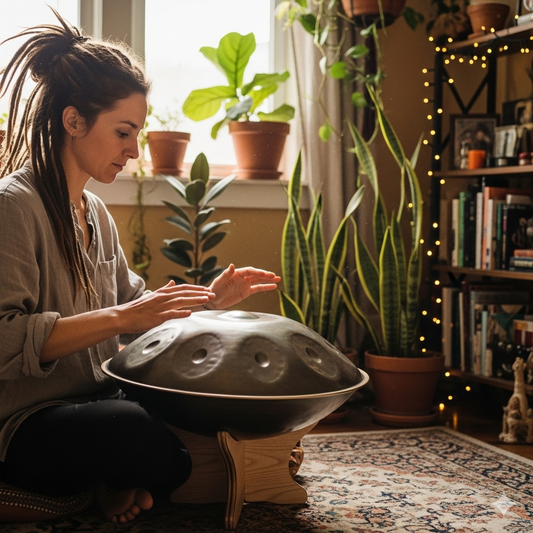
Handpan Therapy & Meditation: How to Use Its Et...
I hope this article has helped you better understand handpan therapy. Whether you listen to the music online or have a chance to experience a session in person, letting the...
Handpan Therapy & Meditation: How to Use Its Et...
I hope this article has helped you better understand handpan therapy. Whether you listen to the music online or have a chance to experience a session in person, letting the...
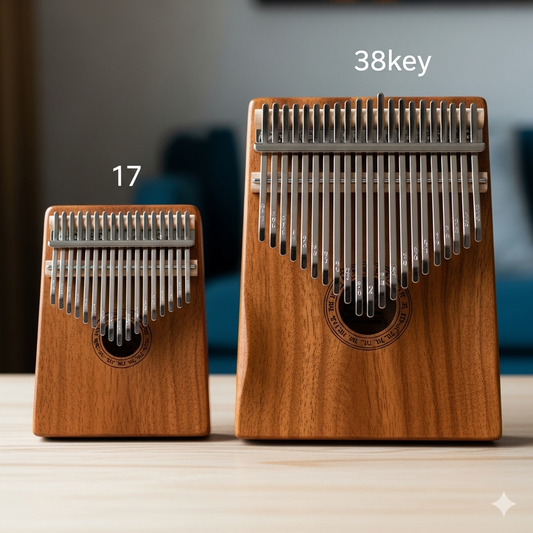
17-Key vs. 38-Key Kalimba: Which One Should a B...
No matter which one you choose, we recommend watching some video reviews and reading user feedback before you decide. If you're in Shanghai, you can visit a local music store...
17-Key vs. 38-Key Kalimba: Which One Should a B...
No matter which one you choose, we recommend watching some video reviews and reading user feedback before you decide. If you're in Shanghai, you can visit a local music store...
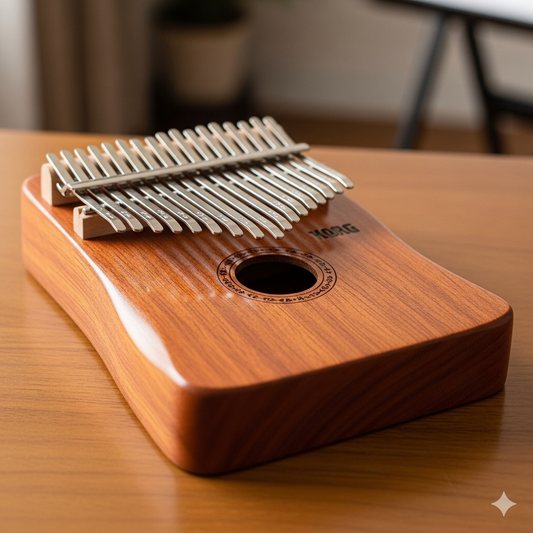
Beginner's Must-Read! How to Choose Your First ...
Summary and Final Tip Choosing your first kalimba isn't complicated. Remember these three key factors: First Choice for Material: Mahogany wood. First Choice for Keys: 17 keys. First Choice...
Beginner's Must-Read! How to Choose Your First ...
Summary and Final Tip Choosing your first kalimba isn't complicated. Remember these three key factors: First Choice for Material: Mahogany wood. First Choice for Keys: 17 keys. First Choice...